XU Bing: Existing Issues Lead to Arts
Art Exchange VOL.Art Exchange|by DE Jia Photo by UCCA
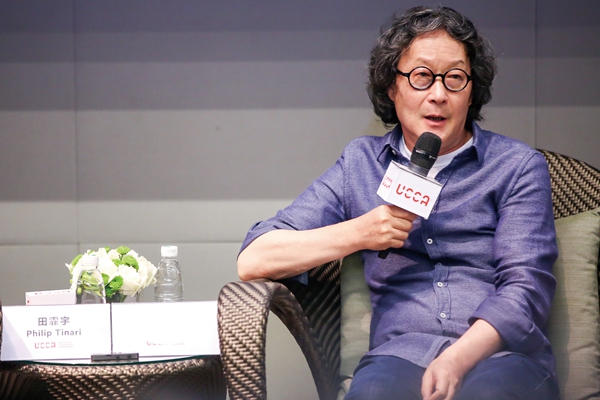
XU Bing
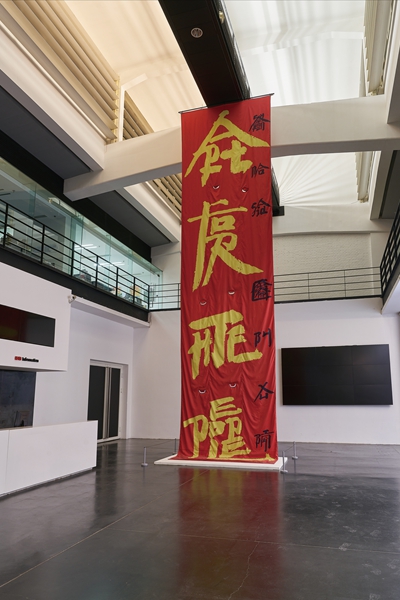
Arts for People (Installation) XU Bing
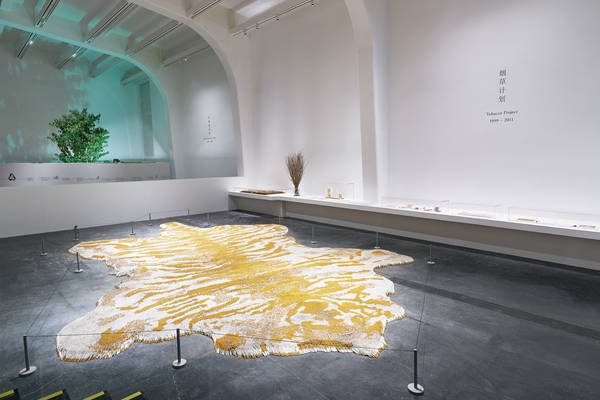
Honor and Splendor, 660,000 1st Class brand cigarettes, dimensions variable. Installation view, Virginia Museum of Fine Arts (Richmond, 2011). Courtesy XU Bing Studio.
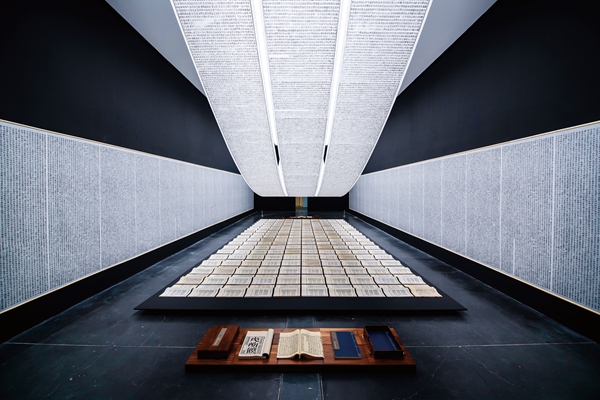
Book from the Sky (mixed media installation, dimensions variable) Installation view, National Gallery of Canada (Ottowa, 1998). Courtesy XU Bing Studio.
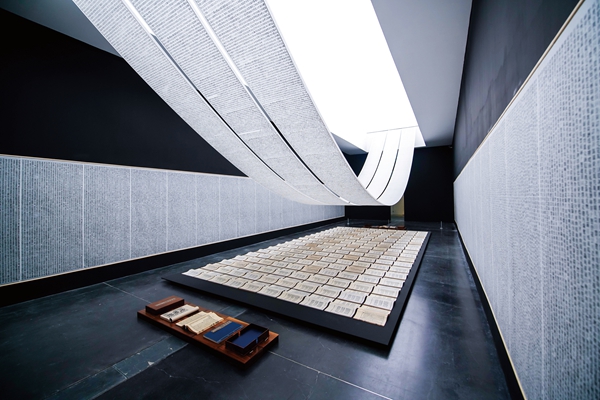
Book from the Sky mixed media installation, dimensions variable. Installation view, National Gallery of Canada (Ottowa, 1998). Courtesy XU Bing Studio.
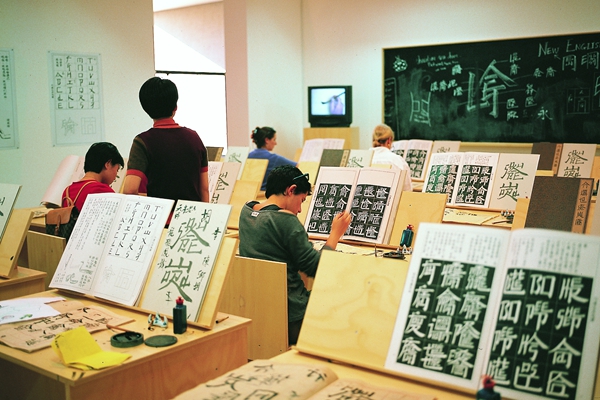
Square Word Calligraphy Classroom, (mixed media installation, dimensions variable). Installation view, Institute of Contemporary Art, London (1997). Courtesy XU Bing Studio.
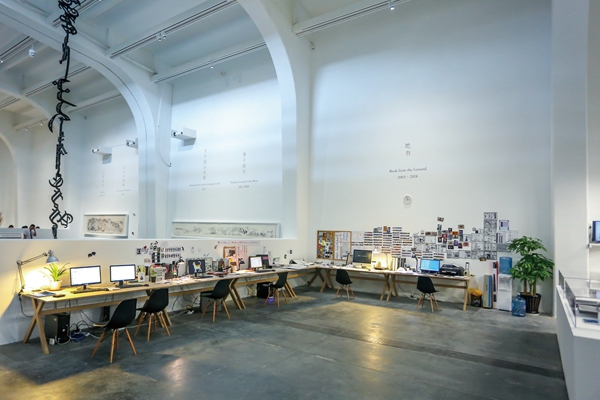
Di Shu Space for Creation
From last year to this year, the artist XU Bing has held solo exhibitions in Macau, Wuhan and Beijing successively. From July 21th to October 18th, the "Xu Bing: Thoughts and Methods" exhibition held at the Ullens Center for Contemporary Art in Beijing is the most comprehensive retrospective of his largest work on the mainland, endeavoring to fully comb the artist's creation process of more than 40 years since the beginning of the 70s from the last century.
Since the year of 1978, both the Tianshu series and Ghost Wall since the late 1980s, the English Blocks and The Story Behind in the 1990s, or the recent Eye of the Dragonflies, XU Bing's creation, which has been based on a large number of research, trying to break people's existing cognition of artistic boundaries, and the relationship between works is more active and explanatory. As one of the most influential artists on the international stage, XU Bing has profoundly influenced the historical writing of Chinese contemporary art with his continuous, quantitative and extensive artistic practice. He has always been highly sensitive to the times he lives in, with his works, closely related to the current social and cultural reality, are most thought-provoking. As he said: "You have to deal with issues existing at places you live. Existing issues lead to arts."
I Have to Walk Fast as Times Pass Rapidl
His artistic creation crosses on many different clues, initiating from the cultural, linguistic and traditional knowledge systems of early research, to the cross-cultural and global issues that began to be concerned in the 1990s after arriving in New York, and then the discussion on the new phenomenon generated in rapid development of society in this century. He has always focused on discovering new artistic methods to respond to new problems; his creative concept is rigorous, with diverse media and clear artistic expression, presenting a high degree of recognition in the world of contemporary art and affecting China's overall contemporary art at different levels, and, in a sense, providing the public with a thumbnail of the development of Chinese contemporary art.
In the 1970s, XU Bing, who was committed to farming in the mountains of Beijing, has co-founded the hand-printed publication Lanman Shanhua with local farmers and educated youth. In the process, the he has accumulated many social and political implications for the structural design of Chinese characters, while the rural folklore also provided he with the soil to absorb traditional culture; from the late 1970s to the mid-1980s, XU Bing has created a miniature woodcut print with the theme of "Jade Collection" and innovatively explored the language features of printmaking. His works Five Complex Seriesis quite experimental. These early attempts and explorations have prepared the artist for artistic creation with more conceptual features accordingly. In the late 1980s, he created a "pseudo-Chinese character" that did not mean function, and made it into a non-readable "book" in the Song Dynasty version in the form of movable-type printing - Tianshu. These forms and contents presented a sense of error, reflecting the intellectual thinking and examination of the traditional Chinese culture rooted in the Chinese intellectuals at the beginning of reform and opening-up. And this work has also become the definition of Chinese contemporary art history. However, in the installed work of Ghost Wall, the ink rubbings of the huge Chinese Great Wall have carried out a "truthful distortion copy" of historical relics existing in real time and space, revealing the distant and conceptual existence of the history of China.
"I have been urged to move forward by something in this life, and it seems like finding something lost. The world is rapidly mutating, the more the clues are, the more unclear it is. The more you want to say but remaining unclear. The way the predecessors created concerning the speech, including those that I myself used before, none of them can be used directly, they are no longer belongs to the feeling of the moment, urging people to remain busy looking for and experimenting with new ways. So I did so many things." he said.
Upon starting to create the Phoenix in 2007, XU Bing just returned from the United States. "After I came back, I have been reminding myself: I have missed something during the period that I was in China, this is the reflection that I need most." He felt that he was facing with a brand-new China, "the ways of culture, how it works, functions and what drives China moving forward, you don't understand them at all." He has always been committed to contemporary art, but always adhering to the simple artistic conception of "Art comes from life, higher than life, and restores life". He felt that he has become a contemporary artist unintentionally. "The era enters modern times, I am a modern artist; when it enters the contemporary era, I am a contemporary artist; the times began to be undertaken by experiments, I am an experimental artist. I have to walk fast as times pass rapidly."
Artists have been building their own closed circle for the whole life
In the early 1990s, XU Bing moved to New York of the US. The artist has communicated with Western contemporary art in a"short-handed" style – he tried to get rid of the cultural burdens he carried, and made a series of conceptual art attempts to integrate into the West. In such works as Serials of Sericulture in the US, Panda Zoo and Wild Zebra, the art expressions from the West have been intertwined with specific Chinese traditional elements to showcase the complex relationship between Chinese and Western cultures, such as blending, colliding or repelling; In the works as A, B, C... and The Post-Contract, the seemingly logical translation process between different languages, and the resulting illogical, ridiculous and absurd consequences, presented the strangeness and estrangement of cultural context faced by the artist; The "English Square Calligraphy" series further reconstructed English in the form of Chinese calligraphy. This "De-familiarization" treatment also implies that the artist's thinking about the nature of language communication when he first arrived in New York, but it also seemed to be achieving a reconciliation relationship between the East and the West., while presenting the singular features of the grafting and fusion of Chinese and Western cultural genes, simultaneously pushing the old concept of knowledge into a situation where the judgment fulcrum was lost.
His works How to Borrow Troubles is a beautiful work - XU Bing blew the dust collected in the September 11th incident into the exhibition hall. After 24 hours, the floor of the exhibition hall has been shown by grayish white dust as the Zen words of the 7th century in China: "As All is a Dreamland, How to Borrow Troubles". The exhibition hall of the Cardiff National Gallery in Wales has been covered with a layer of frost-like uniform and thin dust, showing a quiet and solemn beauty, but the tranquility has presented a deep feeling of tingling and tension, even if there were a gust of wind, the "status quo" would change.
On the day of 9/11, XU Bing saw the collapse of the twin towers in his own studio in Brooklyn Williamsburg across the river from Manhattan. "It's like a feeling of being attracted by the Earth heart, the rest is the thick smoke." From that moment, he was keenly aware that the world has changed.
In the days when Xu Bing was in the void after 9/11, the dust collected from the Lower City not only has an implied meaning, it also contained the usual and unusual content entrained in the September breeze, shouldering the unique particles that day brought about: the powder that the building was transformed into during the collapse, the pieces of paper scattered from the building like those dead leaves, and the ashes of human texture, all of which are merged into a unified, eternal purity in the role of fire and power, and mixed with the daily dust. In the long and fruitless debates about the "Freedom Tower" and the September 11th Monument in the past decade, no one has noticed that the monument is already there: the dust itself.
Looking back on his 40 years, XU Bing believes that the artist has been building his own closed circle for the whole life. "As long as you are sincere, no matter what form these works are, large or small, no matter how early or late, in fact, the last relationship between them is to build a closed system. The past works are actually an interpretation of the later counterparts, although their expressions and materials are most different, and this new work is a reminder of the existence of something valuable in the past works that is not fully realized." he said.
Copyright © 2011 CFLAC Corporation, All Rights Reserved














